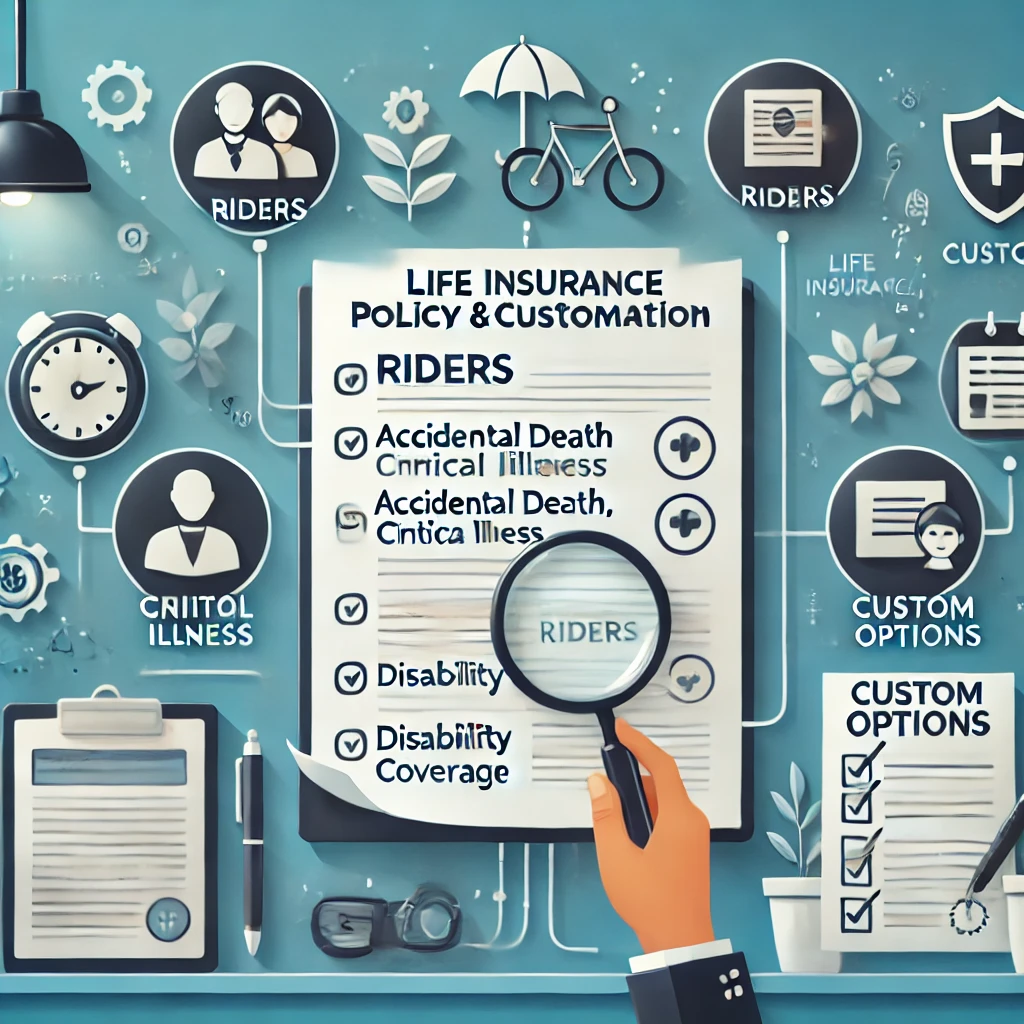How to Choose the Best Life Insurance Policy for Your Family
When it comes to protecting your family’s future, selecting the right life insurance policy is one of the most important decisions you’ll make. The peace of mind that comes from knowing your loved ones will be financially secure in the event of your passing is invaluable. However, with so many options available, it can feel overwhelming. How do you ensure you’re picking the best life insurance policy that meets your family’s needs? This guide will help you navigate the complexities of life insurance and provide insights into choosing the right coverage.
What is Best Life Insurance Policy and Why Does Your Family Need It?
Life insurance is a contract between you and an insurance provider, where you agree to pay premiums, and in return, the insurer provides a lump sum payment (known as the death benefit) to your beneficiaries upon your death. This payout can help cover funeral costs, mortgage payments, college tuition, and everyday living expenses, ensuring that your family isn’t left in financial distress.
Life insurance offers peace of mind, but its primary purpose is to safeguard your loved ones from financial hardships. Whether you’re the primary breadwinner or a stay-at-home parent, your role is vital, and the loss of income or the need to replace essential household services can cause significant strain on your family. Life insurance fills that gap.
Understanding the Different Types of Best Life Insurance Policy
Before deciding on a policy, it’s crucial to understand the two main types of life insurance: term life insurance and permanent life insurance.
Term Life Insurance
Term life insurance provides coverage for a specific period, usually ranging from 10 to 30 years. If you pass away during the term, the policy pays a death benefit to your beneficiaries. If you outlive the policy, no benefits are paid, and the coverage ends.
Benefits of term life insurance:
- Affordability: Term policies are generally more affordable than permanent life insurance, making them an excellent option for young families.
- Flexibility: You can choose the length of the term based on your financial goals, such as covering your mortgage or your children’s education expenses.
- Simplicity: Term life insurance is straightforward, with no investment component or complicated clauses.

Permanent Life Insurance Policy
Permanent life insurance covers you for your entire lifetime, provided you continue to pay the premiums. This type includes both a death benefit and a cash value component, which can grow over time and be accessed during your lifetime.
Types of permanent life insurance:
- Whole Life Insurance: Offers guaranteed death benefits, fixed premiums, and cash value accumulation.
- Universal Life Insurance: Offers more flexibility with premiums and death benefits, allowing you to adjust the policy over time.
- Variable Life Insurance: Allows you to invest the cash value portion in different accounts, potentially increasing the value but also adding risk.
Benefits of permanent life insurance:
- Lifetime coverage: No need to renew or worry about outliving the policy.
- Cash value: Can serve as an investment vehicle, offering tax-deferred growth and potential borrowing power.
- Wealth transfer: Permanent life insurance is often used in estate planning to pass wealth to future generations.
Factors to Consider When Choosing the Best Life Insurance Policy
1. Assess Your Family’s Financial Needs
To choose the best life insurance policy, begin by evaluating your family’s financial needs. Think about:
- How much income needs to be replaced: If you were to pass away, how much would your family need to maintain their current lifestyle?
- Debt obligations: Consider any outstanding debts, such as a mortgage, car loans, or credit card balances, that would need to be paid off.
- Future expenses: Think about future costs, such as your children’s college education or your spouse’s retirement needs.
- End-of-life expenses: Funerals can be expensive, so factor in those costs.
2. Calculate How Much Coverage You Need
A common rule of thumb is to purchase a policy that is 7 to 10 times your annual income. However, every family is different, so it’s important to tailor the coverage to your specific situation. Online life insurance calculators can help, but sitting down with a financial advisor or insurance agent may give you a more accurate picture.
3. Compare Term vs. Permanent Life Insurance
As mentioned earlier, term life insurance is typically the more affordable option, while permanent life insurance offers lifelong coverage and a cash value component. Your choice will depend on your family’s financial goals. If you want coverage only until your children are independent or until major debts are paid off, term life insurance may be sufficient. On the other hand, if you’re looking for lifelong protection and an additional investment tool, permanent life insurance could be the better choice.
4. Understand the Premium Costs
Life insurance premiums vary based on several factors:
- Age: The younger you are when you purchase life insurance, the lower your premiums will be.
- Health: Healthier individuals generally qualify for lower rates. Some insurers require medical exams, while others offer no-exam policies, which may come at a higher cost.
- Policy type and length: Term life insurance is less expensive than permanent life insurance, and shorter terms are more affordable than longer terms.
- Riders and additional features: Riders, such as a disability waiver of premium or critical illness coverage, can add protection but also increase premiums.
5. Evaluate the Financial Strength of the Insurer
Choosing a life insurance company with strong financial ratings is crucial. This ensures that the company will still be around when your family needs to file a claim. Ratings agencies such as A.M. Best, Moody’s, and Standard & Poor’s provide financial strength ratings for insurers, so be sure to check these before committing to a policy.

6. Review Policy Riders and Customizations
Riders are additional features you can add to your life insurance policy for extra protection. Some common riders include:
- Accidental death benefit: Provides an extra payout if death occurs as a result of an accident.
- Waiver of premium: Waives premiums if you become disabled or unable to work.
- Accelerated death benefit: Allows you to access part of the death benefit if diagnosed with a terminal illness.
- Child term rider: Provides coverage for your children under your policy.
These riders can customize your policy to better meet your family’s specific needs.
7. Choose Between Group and Individual Life Insurance
If you have life insurance through your employer, you might wonder if it’s enough. Employer-sponsored life insurance (group life insurance) is often more affordable, but it usually offers limited coverage and ends if you leave your job. Individual life insurance, on the other hand, is more customizable and stays with you regardless of employment.
Frequently Asked Questions of Best Life Insurance Policy
How do I determine how much life insurance coverage I need?
Calculate how much money your family would need to cover living expenses, debts, and future obligations such as college tuition. A general rule is to get coverage equal to 7-10 times your annual income.
What is the difference between term and permanent life insurance?
Term life insurance covers a specific period, while permanent life insurance lasts for your lifetime and includes a cash value component.
Can I change my life insurance policy later?
Yes, many life insurance policies offer flexibility. For example, you can convert some term policies into permanent ones, or adjust coverage and premium amounts with certain types of permanent insurance.
Do I need a medical exam to qualify for life insurance?
It depends. Some policies require a medical exam, which can result in lower premiums for healthier individuals. Others offer no-exam policies, which may have higher premiums.
Can I have multiple life insurance policies?
Yes, you can have more than one life insurance policy. Some people choose to layer term policies to cover different financial obligations at various stages of life.
What happens if I outlive my term life insurance policy?
If you outlive your term policy, the coverage ends, and no death benefit is paid. However, some insurers offer renewal or conversion options.
You Can Also Read : How to Build an Emergency Fund for Financial Security
Choosing the best life insurance policy for your family involves careful consideration of your financial needs, the types of policies available, and the coverage that will protect your loved ones in the years to come. Whether you opt for the affordability of term life insurance or the lifetime benefits of permanent insurance, the key is to select a policy that gives you peace of mind and security. Start by assessing your family’s needs, comparing options, and speaking with a trusted financial advisor to ensure you make the best choice for your family’s future.



